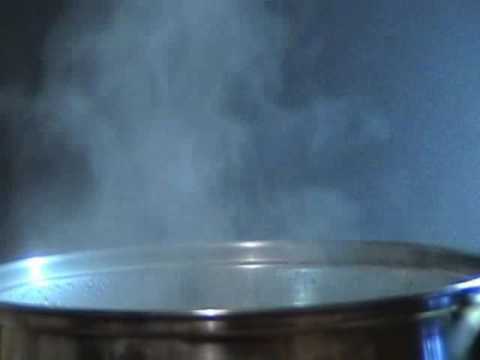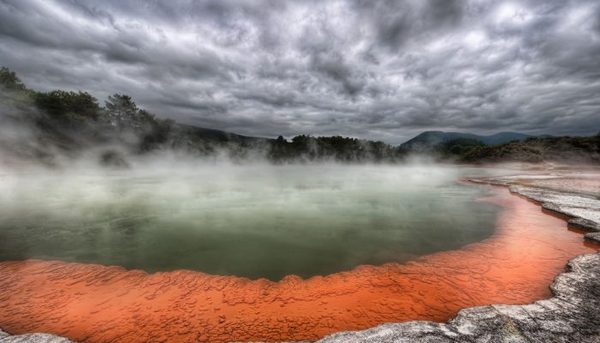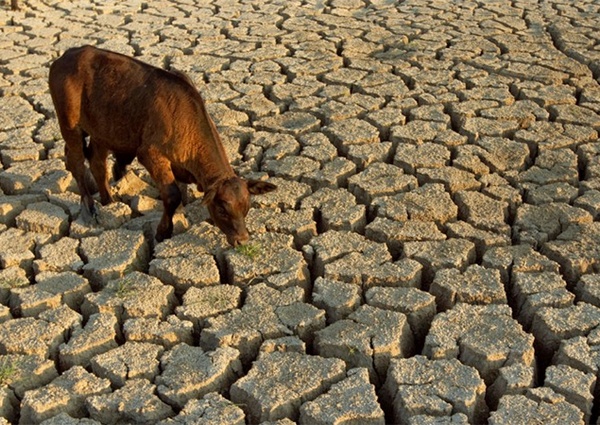Evaporation: Definitions, Causes and Examples

Content:
Evaporation is the phase transition of any liquid into a vapor or gaseous state. The evaporation of water is the simplest example that each person encounters while making a tea, for instance. The vapor coming from the tea is the water that has passed from a liquid state into a vaporous one. Evaporation is widely used in industry and everyday life.
Definition
What is evaporation? The classic definition is: evaporation is the transition from liquid to gas. It is a thermodynamic process, that is, one that occurs under the influence of temperature fluctuations. The amount of any liquid in an open container will gradually decrease due to evaporation.
Reasons
Science explains this phenomenon by the temperature difference on the verge of a phase transition: the liquid is usually somewhat colder than the surrounding air. If there are no external influences, the evaporation of liquids is very slow. The molecules leave the liquid due to diffusion; they pass through the surface of the phase separation of the mass flow, semi-permeable for liquids, but impermeable to gaseous substances.
Where Does Evaporation Occur?
Evaporation always occurs only from the surface of the liquid; this is the main difference between evaporation from other forms of vaporization. Atoms and molecules do not evaporate all at once, but in small layers, gradually. Yet over time, they can evaporate completely.

Another interesting feature of evaporation is the fact that it can have different directions of heat flow. They can go:
- from the depth of the liquid to the surface, and then into the air,
- only from the liquid to the surface,
- to the surface of water and gas environment at the same time,
- to the surface area only from the air.
The direction of heat flow during evaporation depends on the nature of the liquid, the ambient temperature, and the phase section. These three quantities and their ratio form the evaporation formula.
How Does Evaporation Work?
Molecules in liquids locate close to each other, but they do not have a solid connection between themselves, as in solids. Therefore, they are in continuous motion, during which they often collide with each other, change their direction and speed of their movement. Some molecules that are close to the surface can completely leave the liquid if they penetrate through the phase transition zone. And then evaporation will occur. As you can see, the continuous movement of molecules in a liquid is the main reason for this physical process. If a moving molecule has sufficient kinetic energy and speed, then it can overcome the attraction of neighboring molecules and fly to the surface.
Why does evaporation increase when the fluid is heated? When heated, the movement of molecules in water (or another liquid) accelerates and more and more molecules begin to move like “Formula One” and flying to the surface.
At the same time such a phenomenon as “evaporative cooling of a liquid” may occur. All the fastest molecules have already left the heated liquid, and the temperature of the liquid will decrease. In particular, this phenomenon explains why a person, even drenched in warm water, will gradually become cold – all the fast molecules of this warm water will evaporate, and the remaining water will quickly cool without its “racing molecules”.

Boiling geysers is an excellent example of evaporation in nature.
How is Evaporation Different From Boiling?
At the beginning of the article, we wrote that evaporation is especially noticeable during boiling water while making tea or coffee. In fact, evaporation can occur without boiling, just then it will not be noticeable to us. For example, water in a river or lake evaporates, although we do not notice this. As for boiling, it is catalyzed evaporation, when the process itself becomes noticeable to the naked eye and many times accelerated.

Yet boiling occurs only at certain temperatures, and different liquids have different boiling points (for example, water has a boiling point of 100 °C or 212 °F). At the same time, evaporation occurs in lower temperature as well. For example, water begins to evaporate at 32 degrees °F (0 degrees °C). This is the water evaporation point.
Evaporation Rate
How fast does water evaporate? Scientists have identified such major factors that have an effect on the rate of evaporation of water and other liquids:
- Chemical and physical properties of the fluid, the nature of the bonds between the molecules, the density of the substance. The closer the molecules of a liquid are to each other the more difficult it is for them to pick up the desired speed in order to fly out, and the lower the rate of evaporation and the greater the boiling point.
- Temperature. In contrast to the phenomenon of boiling, the evaporation of a liquid can occur even at sub-zero liquid temperatures. Yet all the same, as the temperature decreases, the speed of the particles decreases, and as a result, the evaporation rate decreases.
- The size of the surface. The greater the area of evaporation (that is, the area of contact of the liquid with air) the greater will be the rate of evaporation.
- Wind speed can also affect the rate of evaporation in natural conditions, as the fast movement of air “blows” molecules off the surface, increasing their speed and kinetic energy.
- Atmospheric pressure, the lower it is, the faster any liquid evaporates.
So the water (or other liquid) can evaporate at a different speed, depending on temperature, the size of the surface, wind speed, atmospheric pressure and so on.
Examples
What is an example of evaporation? Evaporation plays an important role in the process of self-regulation of human body temperature (as well as almost all mammals). Since excessive overheating of the body is harmful and sometimes fatal, the body has a protective mechanism to prevent overheating – sweating. For example, when we get sick and have a high temperature, and then it falls, we sweat profusely. We also sweat during heavy physical work, with overheating on the Sun. Sweat is released through the pores of the skin and then evaporates. Thanks to it our body can quickly get rid of excess energy: cool the body and normalize the temperature.
Similarly, it works in animals, and some sometimes even seek to accelerate the evaporation process. For example, dogs open their mouths and stick out their tongues in hot weather. It is the larynx and the tongue of the dog that are most suitable for evaporation of moisture and cooling the body of the animal.

Role in the Water Cycle
Evaporation of water creates rain clouds, which then, pouring rain, feed the plants and trees. It is raining on Earth, thanks to evaporation. Ask the people of North Africa or Central India, who often suffer from drought, how rains are important and how difficult sometimes without them.

Role in Industry and Everyday Life
Here are just a few examples of the use of evaporation in industry.
- Evaporation applies when creating coolers for engines and nuclear reactors.
- When drying various things: from clothes to industrial raw materials.
- With air conditioning and air purification.
- When cleaning various substances at the molecular level.
- While steaming in cooking.
- When cooling water.
Industrial equipment, based on evaporation processes, is constructed according to the same principle: it always maximizes the surface area of the liquid, which ensures the most optimal heat exchange with the gaseous medium.
References and Further Reading
- “The definition of evaporate”. Dictionary.com. Retrieved 2018-01-23.
- The New Student’s Reference Work (1914). 1914. p. 636.
- Lohner, Science Buddies, Svenja. “Chilling Science: Evaporative Cooling with Liquids”. Scientific American. Retrieved 2018-01-23.
- Jump up to: a b Silberberg, Martin A. (2006). Chemistry (4th ed.). New York: McGraw-Hill. pp. 431–434. ISBN 0-07-296439-1.

Author: Pavlo Chaika, Editor-in-Chief of the journal Poznavayka
When writing this article, I tried to make it as interesting and useful as possible. I would be grateful for any feedback and constructive criticism in the form of comments to the article. You can also write your wish/question/suggestion to my mail pavelchaika1983@gmail.com or to Facebook.

